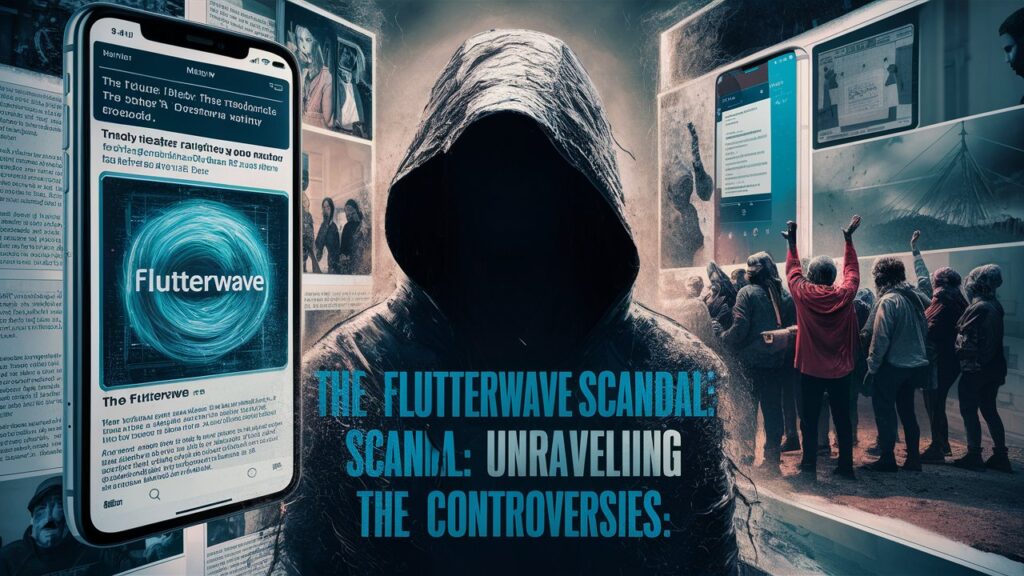Flutterwave, a leading fintech company in Africa, has recently been at the center of several scandals that have raised eyebrows across the financial and tech sectors. These controversies revolve around allegations of fraud, money laundering, and regulatory battles. Let’s delve into the key aspects of the Flutterwave scandal to better understand its implications.
Alleged Involvement in Ponzi Schemes
One of the most significant accusations against Flutterwave is its alleged involvement in facilitating a Ponzi scheme. The company was accused of enabling the movement of substantial sums—amounting to billions of Naira—through its platform for 86 Football Technology, a suspected Ponzi scheme. This case caught considerable attention when 2,468 Nigerian nationals claimed they lost $12.04 million through this scheme. Consequently, they sued Flutterwave, holding the company accountable for their losses.
The seriousness of these allegations led to a Kenyan court freezing 45 bank accounts and ten mobile money wallets belonging to Flutterwave. This action was part of a broader legal effort to investigate and address the claims made by the affected parties. Asset freezing is a common legal tactic to prevent further financial activity while investigations are ongoing.
False Hacking Allegations
Adding to the controversy, Flutterwave faced false hacking allegations, claiming that a hack resulted in the loss of N2.9 billion. However, Flutterwave strongly denied these claims, asserting there was no actual loss of user funds. The company clarified that the incident involved internal processes rather than an external breach. This clarification aimed to address concerns and maintain trust among its users and stakeholders.
Legal Battle with Kenyan Authorities
Flutterwave’s legal troubles extended to Kenya, where the Asset Recovery Agency (ARA) accused the company of money laundering. In response, Kenyan authorities froze Flutterwave’s accounts as part of their investigation. However, the situation turned when the Kenyan High Court dismissed the case against Flutterwave. The court criticized the ARA for its hasty and reckless legal action, leading to Flutterwave being cleared of any wrongdoing in this particular matter.
Impact and Implications
The Flutterwave scandal has sparked significant debate about the regulatory environment for African fintech companies. These controversies highlight the challenges digital payment platforms face in navigating complex regulatory landscapes. While Flutterwave has been cleared of some allegations, the ongoing legal battles underscore the need for robust regulatory frameworks to address the risks associated with financial technology.
The scandals have also raised questions about the due diligence required from fintech companies and the importance of maintaining transparency and compliance with legal standards. For stakeholders and users alike, these developments serve as a reminder of the potential risks involved in digital financial transactions and the importance of staying informed about the latest updates.
Ongoing Legal Matters
It’s important to note that the legal issues surrounding Flutterwave are still evolving. As with any ongoing legal matter, the situation can change based on new evidence, court rulings, or regulatory decisions. Anyone interested in the latest developments regarding the Flutterwave scandal should stay updated through reliable news sources.
Also Read: Trulife Distribution Lawsuit: An In-Depth Review
Conclusion
The Flutterwave scandal underscores the complex interplay between fintech innovation and regulatory oversight. The accusations of involvement in Ponzi schemes, false hacking claims, and legal battles with Kenyan authorities reflect broader issues within the financial technology sector. As the situation unfolds, the lessons learned from these controversies may influence future regulatory practices and impact the operations of fintech companies across Africa and beyond.
Understanding the nuances of these scandals helps in appreciating the challenges faced by emerging financial technologies and the importance of maintaining stringent regulatory standards.



